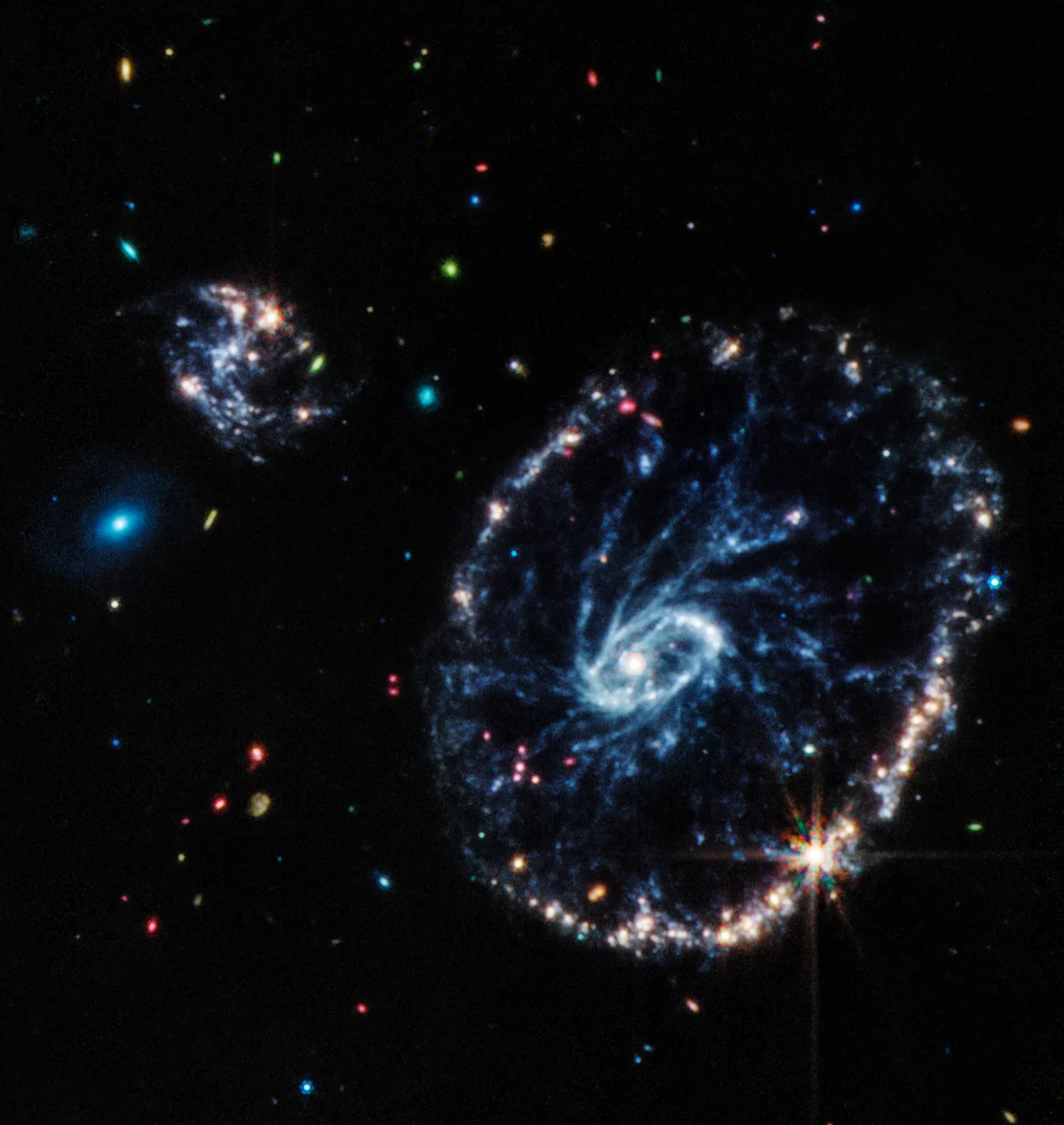![]() Home > Space & Science
Home > Space & Science
James Webb Space Telescope Depicts Cartwheel Galaxy In Stunning Detail

NASA, ESA, CSA, STScI and Webb ERO Production Team
![]() August 3rd, 2022 | 15:06 PM |
August 3rd, 2022 | 15:06 PM | ![]() 582 views
582 views
WASHINGTON, UNITED STATES
NASA says the observatory has shed more light on star formation within the galaxy.
NASA and its partners on the James Webb Space Telescope have shared more spectacular images from the observatory. This time around, they provided a fresh look at the Cartwheel Galaxy, which Hubble and other telescopes previously observed. NASA said JWST has been able to reveal new details about both star formation and the black hole at the center of the galaxy, which is around 500 million light years from Earth.
Using infrared light detection, JWST was able to peer through the dust that obscured the Cartwheel Galaxy from view when other telescopes observed it. The above image is a composite from JWST's Near-Infrared Camera (NIRCam) and Mid-Infrared Instrument (MIRI). The JWST website has higher-resolution versions.
Data from NIRCam, which is the JWST's primary imager, is colored in blue, orange, and yellow, while MIRI's data is in red. NASA says the blue dots that appear in the red swirls of dust are individual stars or pockets of star formation. "NIRCam also reveals the difference between the smooth distribution or shape of the older star populations and dense dust in the core compared to the clumpy shapes associated with the younger star populations outside of it," the agency noted.
MIRI, meanwhile, was able to unearth more details about the galaxy's dust. It detected regions that are rich in hydrocarbons and other chemical compounds, along with silicate dust, which is similar to a lot of the dust present on Earth. Those regions form several spiraling spokes that led to the naming of the Cartwheel Galaxy. Hubble was previously able to image the spokes, but they're much clearer in the JWST observations. NASA also provided a MIRI-only image of the galaxy:

NASA, ESA, CSA, STScI and Webb ERO Production Team
The Cartwheel Galaxy formed following a collision between a large spiral galaxy and a smaller one. It has two rings, a bright inner ring and a colorful outer one. The outer ring has been expanding from the center of the collision for around 440 million years.
The interior ring contains "a tremendous amount of hot dust," NASA said. The brightest areas host gigantic young star clusters. The outer ring, meanwhile, features star formation and supernovas. When it expands and hits surrounding gas, star formation occurs.
NASA, the European Space Agency, Canadian Space Agency and the Space Telescope Science Institute last month revealed the first stunning full-color images from JWST. They included one that showed the "Cosmic Cliffs" of the Carina Nebula and a peek at stars in the early stages of formation. The telescope has also caught sight of Earendel, the most distant star that we know of in the universe. While it's still very early days for the JWST's science operations, it's already helping scientists develop a deeper understanding of the cosmos — as well as providing some incredible images for the rest of us to admire.
Source:
courtesy of ENGADGET
by Kris Holt
If you have any stories or news that you would like to share with the global online community, please feel free to share it with us by contacting us directly at [email protected]